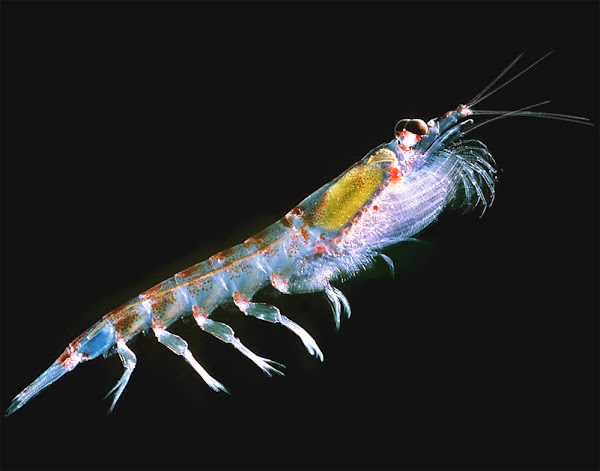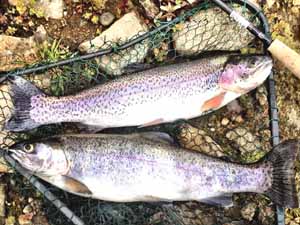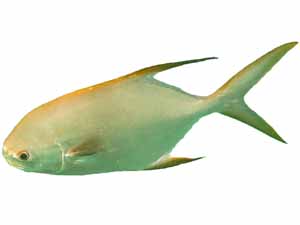The Antarctic Krill is a species of krill which is found in the Antarctic waters of the Southern Ocean.
It is a main species in the Antarctic ecosystem and is, in terms of biomass, probably the most abundant animal species on the planet.
It is actually a small, swimming crustacean that lives in large schools, called swarms. Sometimes reaching densities of 10,000 to 30,000 individual animals per cubic meter.
The Antarctic Krill is widespread in the Southern Ocean. Overall the population seems to be stable.
Krill fishery is regulated by the Convention on the Conservation of Antarctic Marine Living Resources (CCAMLR) since the 1980s. But total catches have strongly declined at the beginning of the 1990s and are slightly increasing since that time.
Currently the Antarctic Krill is listed as Least Concern. Read some more information about this species below.
Antarctic Krill Characteristics
The Antarctic Krill is a small species with spherical eyes. Their eyes are somewhat larger in males than in females. They have short, triangular and truncated rostrum, which is a little shorter in males than in females.
Distal segment of mandibular palp long and slender, seven times as long as broad.
First segment of antennular peduncle bearing a wide lappet with a sinuous distal margin which is stouter, narrower and smaller in males than females second segment bearing a dorsal lappet which is wider and larger in females.
The abdominal segments are without mid-dorsal spines, and the sixth segment is clearly as long as high.

The Antarctic Krill generally grow to a body length of around 6 cm. And their average body weight is around or up to 2 grams. Photo and info from Wikipedia.
Diet
The Antarctic Krill feed directly on minute phytoplankton, thereby using the primary production energy that the phytoplankton originally derived from the sun in order to sustain their pelagic life cycle.
Breeding
From January to March is the main spawning season of the Antarctic Krill. The females generally lay between 6,000 and 10,000 eggs per spawning.
Uses
The Antarctic Krill is mainly used for food. Products include krill oil and krill meal for human consumption.
Special Notes
The Antarctic Krill is a commercially important krill species. Commercial fishery operating since the 1970s, and currently catching up to 300,000 tonnes per year.
It is widely distributed, and found throughout the Southern Ocean, and as far as the Antarctic Convergence.
Along with being valuable human food, this species also provide an important food source for whales, leopard seals, fur seals, seals, icefish, penguins, albatrosses, squid, crabeater seals and many other species of birds.
The Antarctic Krill can live for up to 6 years. Currently it is mainly used for human consumption and also for animal food and used as bait.
It is enriched with high protein and vitamin content. And it is very suitable for both human consumption and the animal feed industry.
However, review full breed profile of this fish species in the table below.
| Name | Antarctic Krill |
| Kingdom | Animalia |
| Phylum | Arthropoda |
| Class | Malacostraca |
| Order | Euphausiacea |
| Family | Euphausiidae |
| Genus | Euphausia |
| Species | E. superba |
| Binomial Name | Euphausia seperba |
| Other Names | Often referred to as light-shrimp, because they can emit light, produced by bioluminescent organs |
| Breed Purpose | Used for both human and animal feed, also used as bait |
| Weight | Can reach around or up to 2 grams |
| Special Notes | Commercially important species, widely distributed, found throughout the Southern Ocean, and as far as the Antarctic Convergence, used for both human and animal food, can live for up to 6 years, also used for bait |
| Breeding Method | Natural |
| Climate Tolerance | Native climate |
| Rarity | Common |
| Availability | Southern Ocean |






